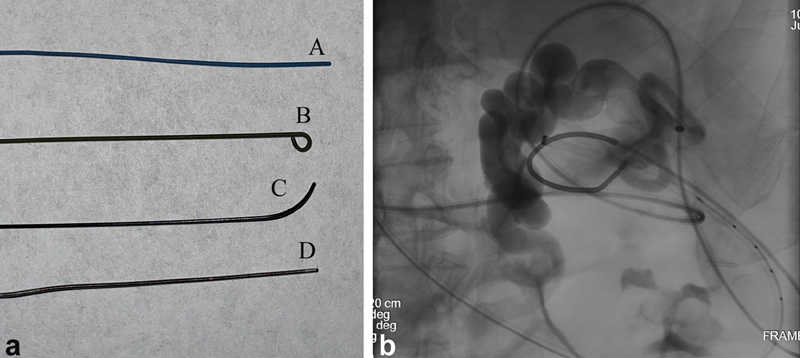Fig. 1.

( a ) Commonly used wires. A—The Amplatz Super Stiff Guidewire (Boston Scientific) is a stiff working wire that allows for stable exchanges and excellent catheter and device trackability. It has a stainless-steel core with flat-wire coil and polytetrafluoroethylene (PTFE) coating, and comes in several lengths and tip configurations. B—Rosen Guidewire (Cook Medical) is a working wire that has a tightened 1.5-mm “J” configuration to allow for atraumatic vessel or stent navigation. C—Angled Glidewire (Terumo) is a soft, hydrophilic wire that may be used for navigation across a tight stenosis or other fluid-filled structure. The angled tip provides steerability; multiple different angle configurations are available. D—Magic Torque Guidewire (Boston Scientific) has a stainless steel core and spring coil tip. The distal 10 cm has a hydrophilic coating, while the proximal end does not, allowing the wire to be used as both a navigational and working wire in certain situations. The distal end also has radiopaque markers (two shown with black arrows) at 2- and 1-cm intervals to allow for calibration for device size during a case. ( b ) A 63-year-old man with cirrhosis, portal hypertension, status post transjugular intrahepatic portosystemic shunt (TIPS) creation now with hepatic encephalopathy and large splenorenal shunt, for which he presents for closure. After obtaining antegrade trans-TIPS access and retrograde access through the left renal vein to the splenorenal shunt, a Magic Torque wire is positioned in the field of view to allow for measurement calibration for vascular plug sizing. Black arrows—1-cm markings on the wire.
